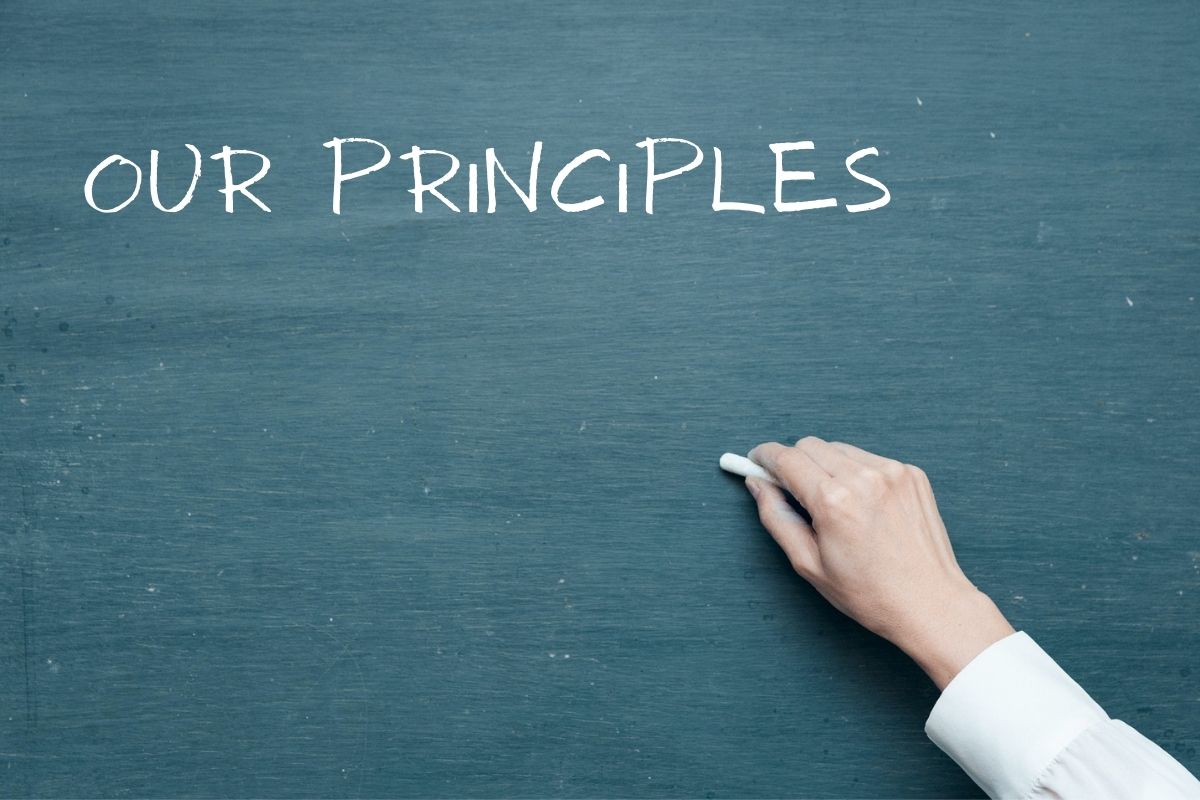-
What does it mean to say a student is getting a high quality education?
-
How do we know a good classroom, school, district, or system when we see one?
-
What defines meaningful improvement for a student, classroom, school, or district?
-
How can good information on education quality be used to improve education quality?
- We include not only students’ and educators’ accomplishments but also factors that enable them to achieve those accomplishments.
- We include only valid and reliable measures of factors that actually make a difference for student success and that educators can affect.
- We do not compare students, teachers, schools, districts, or states to one another; rather, we compare findings on educational quality to absolute standards at all these levels.
- We seek to design innovative, interactive report formats and visualizations that make results more timely, user-driven, and actionable.
Guided by Principle
This series presents eight core principles we have distilled from our work and how we apply these principles to gather, report and use data more effectively to improve education.
We have had to learn important lessons about every aspect of using data in education: How to collect it, how to assemble and report it in compelling ways, and how to make sure it is useful to educators.
Partners in Improvement
IRRE has been developing and refining our approach to using data in education for the past 30 years. Together with our partner schools, districts, foundations, and policy makers we attempt to collect and report the best information we can, and use it to improve education.
Guiding these efforts have been four fundamental questions:
A Paradigm Shift
We’ve seen some important themes emerge in our work that signal the need, we believe, for a paradigm change. Specifically, our approach to defining and measuring education quality differs from others that we have encountered in important ways:
These four differences outline the paradigm shift that we think needs to continue happening in order to provide educators, investors in education, and consumers with a high caliber of information to help them make decisions, guide their actions, and gauge the impact of their efforts.
The Principles
The following eight principles will be explored in more depth throughout this series. These principles have emerged from our work and have guided the ongoing refinement of our own Measuring What Matters tools.
However, we think these principles can have great value to educators no matter what system or tools they use to collect, report, and consume data.

Principle 1: Measure what students accomplish and what it takes to get them there.
Education quality should not be restricted to test scores or to any other set of student performance measures. Quality information should also include students’ actual learning experiences, the educational practices they encounter, the quality of the support their educators receive, and the system conditions required for their success.
Principle 2: Measure what matters and what’s moveable, and measure it well.
Include only measures we know are reliable and valid, make a difference for student success and can be improved through the efforts of educators.
Principle 3: Keep faces on the data.
Good educational data will capture key attributes of the work of each student, educator, classroom, school, and district, not just a typical or average result.
Principle 4: Make education quality about succeeding, not winning.
Education data that compare students, teachers, or districts tell us little about quality and even less about how to improve it. Determine absolute standards of what constitutes quality, then assess the most current status of each student, school, district, or state against those standards.
Principle 5: Assess progress toward absolute quality standards, but keep progress information separate from current status.
Establish clear benchmarks for adequate movement toward ultimate goals during a given time period, and report progress against these growth standards.
Principle 6: Account for the level of difficulty participants face in achieving quality.
Credible and actionable information on education quality cannot exclude important factors that make it more or less difficult to achieve high quality, but these factors should not impact the quality reporting of students’ educational accomplishments and experiences, or their teachers’, schools’ and districts’ practices.
Principle 7: Let evidence and core values, not convenience or politics, determine how quality is defined.
Designers of education quality systems should publicly select and prioritize the measures they will use, with primary consideration given to what is important to student success and is within educators’ sphere of influence.
Principle 8: Make reporting timely, accessible, transparent, and actionable.
Consumers of education quality information must know how their results come about for students, schools, and districts. They must have access to quality information that is up to date and speaks to their role in improving it.